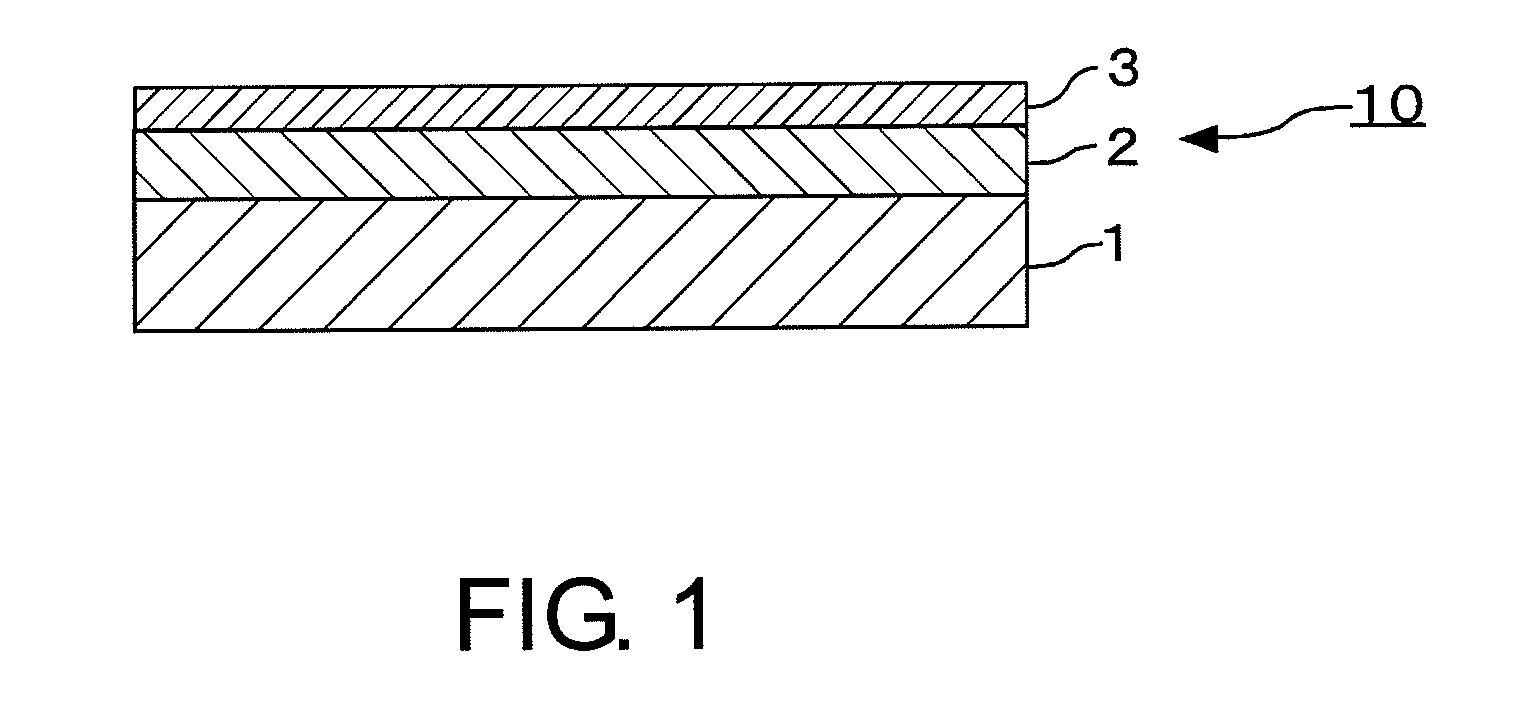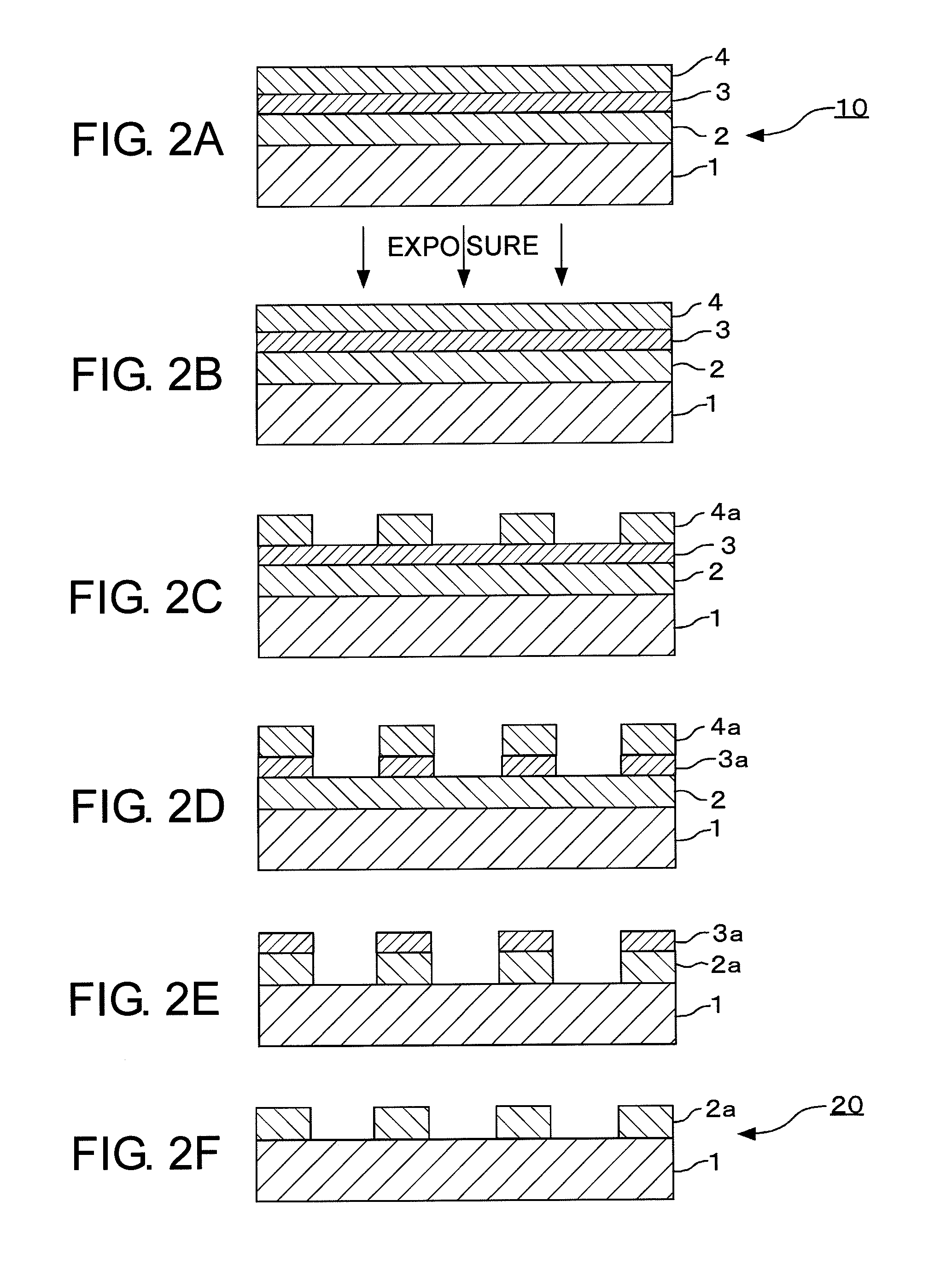[0010]Generally, in order to suppress the
surface reflection of a light-shielding film, the surface reflectance of the light-shielding film is reduced by setting the degree of oxidation or nitridation of a material of a layer on the surface side (upper layer) to be higher than that of a material of a layer on the substrate side (lower layer). On the other hand, in a binary mask blank, a light-shielding film is required to have a predetermined or higher light-shielding performance (e.g. an
optical density (OD) of 2.8 or more). As the degree of oxidation or nitridation of a material increases, the light-shielding performance decreases. Due to the
miniaturization of a transfer pattern in recent years, it has become necessary to use an
oblique illumination method or an immersion
exposure method. Following the
miniaturization of the transfer pattern, the
miniaturization and complication of an auxiliary pattern are remarkable. In order to cope with them, a reduction in the thickness of the light-shielding film has become necessary. Therefore, it is necessary to minimize the degree of oxidation or nitridation in the layer on the substrate side (lower layer) in order to ensure the light-shielding performance with as small a thickness as possible. On the other hand, the surface reflectance on the substrate side (back-surface reflectance) of the light-shielding film should also be suppressed to a predetermined value or less although not so low as the surface reflectance on the surface side (front-surface reflectance) of the light-shielding film, and thus, the lower layer of the light-shielding film should also be oxidized or nitrided to some extent.
[0013]According to the recent EB defect
correction technique, using a
passivation technique (supplying water,
oxide-based gas, or the like) such as water
passivation that lowers the
etching rate by supplying water, it is possible to reduce the
disadvantage even if there is some
etching rate difference between the upper and lower
layers of the light-shielding film. However, there is a limit to such
etching rate control. Further, if the etching rate is excessively lowered, the correction time is prolonged so that the
etching selectivity is reduced between the lower layer and a transparent substrate made of synthetic
quartz or the like. As a consequence, there arise problems that a surface of the substrate is roughened, that etched recesses are locally formed on the
substrate surface, and so on. Therefore, the laminated structure of the light-shielding film that requires the etching rate of the lower layer to be extremely lowered is not preferable.
[0016]As a result of studying various materials, the present inventors have found that, in a mask blank comprising a light-shielding film having an at least two-layer structure comprising a lower layer composed mainly of a material containing a
transition metal, silicon, and
nitrogen and an upper layer composed mainly of a material containing a transition
metal, silicon, and nitrogen, it is possible to solve the problems which arise when the conventional EB defect
correction technique is applied, and further to realize a reduction in the thickness of the light-shielding film by adjusting the ratio of the etching rate of the lower layer to that of the upper layer in EB defect correction to 1.0 or more and 5.0 or less.
[0062]According to this invention, by forming a light-shielding film into an at least two-layer structure comprising a lower layer composed mainly of a material containing a transition
metal, silicon, and nitrogen and an upper layer composed mainly of a material containing a transition metal, silicon, and nitrogen and by adjusting the ratio of the etching rate of the lower layer to that of the upper layer in EB defect correction to 1.0 or more and 5.0 or less, it is possible to provide a mask blank which can solve the problems that arise when the conventional EB defect correction is applied, and which enables an EB defect correction technique to be suitably applied to black defect correction of a transfer pattern of a transfer mask manufactured from the mask blank, and further to provide such a transfer mask, a method of manufacturing such a transfer mask, and a method of manufacturing a
semiconductor device using such a transfer mask.
 Login to View More
Login to View More  Login to View More
Login to View More 


